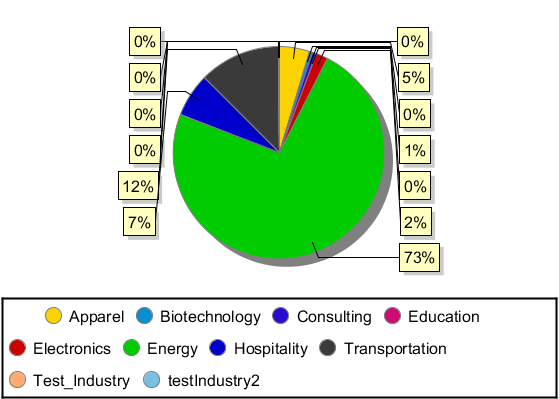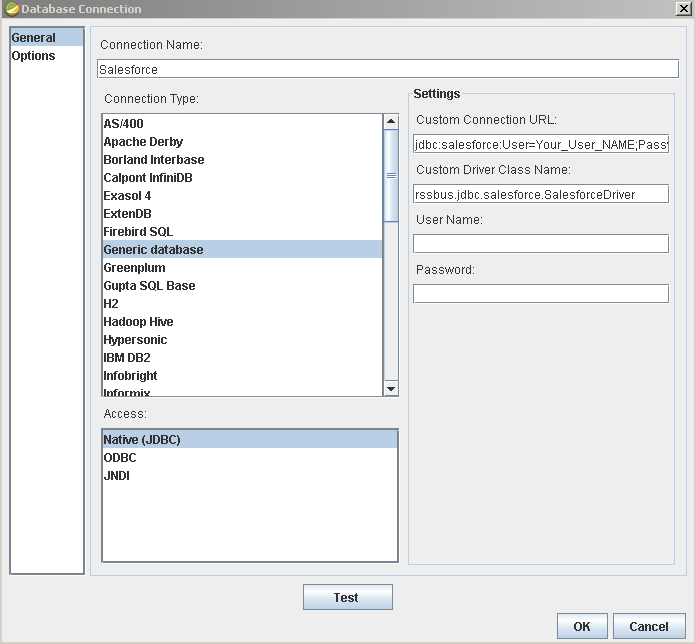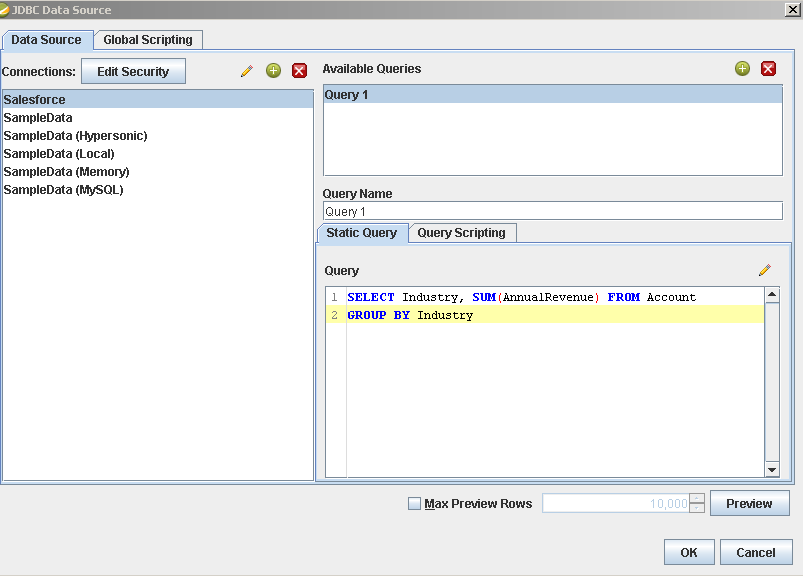Discover how a bimodal integration strategy can address the major data management challenges facing your organization today.
Get the Report →Integrate TaxJar Data in the Pentaho Report Designer
Publish reports based on TaxJar data in the Pentaho BI tool.
The CData JDBC Driver for TaxJar data enables access to live data from dashboards and reports. This article shows how to connect to TaxJar data as a JDBC data source and publish reports based on TaxJar data in Pentaho.
Connect and Create a Report
- Copy the JAR file of the driver, located in the lib subfolder of the installation directory, to the \Report-Designer\lib\jdbc\ folder in the Pentaho directory.
- Run the report-designer.bat file in the \Report-Designer\ folder to open the Report-Designer UI.
Create a new data source with the driver by clicking Data -> Add Data Source -> Advanced -> JDBC (Custom) and then creating a new TaxJar connection. In the resulting dialog, configure the connection properties as shown below.
Custom Connection URL property: Enter the JDBC URL. This starts with jdbc:taxjar: and is followed by a semicolon-separated list of connection properties.
To authenticate to the TaxJar API, you will need to first obtain the API Key from the TaxJar UI.
NOTE: the API is available only for Professional and Premium TaxJar plans.
If you already have a Professional or Premium plan you can find the API Key by logging in the TaxJar UI and navigating to Account -> TaxJar API. After obtaining the API Key, you can set it in the APIKey connection property.
Additional Notes
- By default, the CData connector will retrieve data of the last 3 months in cases where the entity support date range filtering. You can set StartDate to specify the minimum creation date of the data retrieved.
- If the API Key has been created for a sandbox API account please set UseSandbox to true, but not all endpoints will work as expected. For more information, refer to the TaxJar developer documentation.
Built-in Connection String Designer
For assistance in constructing the JDBC URL, use the connection string designer built into the TaxJar JDBC Driver. Either double-click the JAR file or execute the jar file from the command-line.
java -jar cdata.jdbc.taxjar.jarFill in the connection properties and copy the connection string to the clipboard.
![Using the built-in connection string designer to generate a JDBC URL (Salesforce is shown.)]()
When you configure the JDBC URL, you may also want to set the Max Rows connection property. This will limit the number of rows returned, which is especially helpful for improving performance when designing reports and visualizations.
Below is a typical JDBC URL:
jdbc:taxjar:APIKey=3bb04218ef8t80efdf1739abf7257144;- Custom Driver Class Name: Enter cdata.jdbc.taxjar.TaxJarDriver.
- User Name: The username to authenticate with.
- Password: The password to authenticate with.
![Required connection properties defined in the JDBC URL. (Salesforce is shown.)]()
Add TaxJar Data to a Report
You are now ready to create a report with TaxJar data.
-
Add the TaxJar source to your report: Click Data -> Add Data Source -> JDBC and select the data source.
Configure the query. This article uses the one below:
SELECT TransactionID, UserID FROM Orders WHERE TransactionID = '123'![The query to retrieve data, specified in the JDBC data source configuration wizard. (Salesforce is shown.)]()
- Drag a chart onto your report and double-click it to edit the chart. Run the report to display the chart. You can use the results of this query to create a simple chart for the Orders table.
- Finally, run the report to see the chart.










